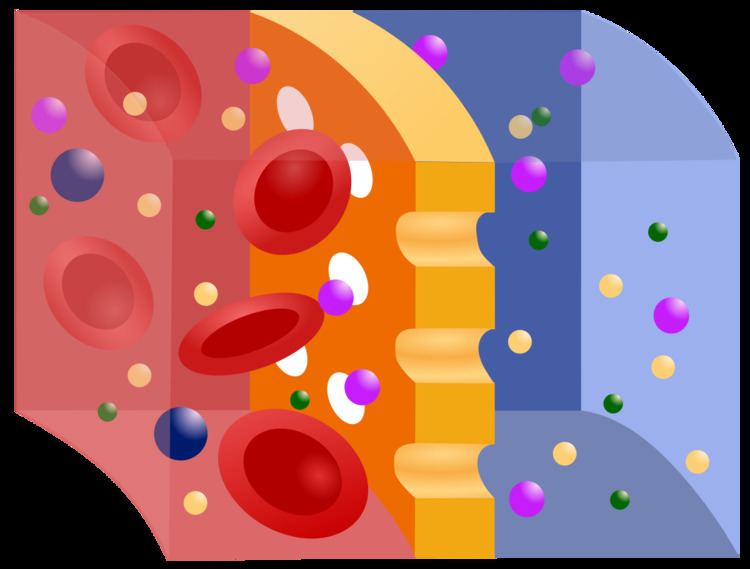 | ||
A semipermeable membrane is a type of biological or synthetic, polymeric membrane that will allow certain molecules or ions to pass through it by diffusion—or occasionally by more specialized processes of facilitated diffusion, passive transport or active transport. The rate of passage depends on the pressure, concentration, and temperature of the molecules or solutes on either side, as well as the permeability of the membrane to each solute. Depending on the membrane and the solute, permeability may depend on solute size, solubility, properties, or chemistry. How the membrane is constructed to be selective in its permeability will determine the rate and the permeability. Many natural and synthetic materials thicker than a membrane are also semipermeable. One example of this is the thin film on the inside of the egg.
Contents
Note that a semipermeable membrane is not the same as a selectively permeable membrane. Semi-permeable membrane describes a membrane that allows some particles to pass through (by size), whereas the selectively permeable membrane "chooses" what passes through (size is not a factor).
Biologic membranes
An example of a biological semi-permeable membrane is the lipid bilayer, on which is based the plasma membrane that surrounds all biological cells. A group of phospholipids (consisting of a phosphate head and two fatty acid tails) arranged into a double-layer, the phospholipid bilayer is a semipermeable membrane that is very specific in its permeability. The hydrophilic phosphate heads are in the outside layer and exposed to the water content outside and within the cell. The hydrophobic tails are the layer hidden in the inside of the membrane. The phospholipid bilayer is the most permeable to small, uncharged solutes. Protein channels float through the phospholipids, and, collectively, this model is known as the fluid mosaic model.
Reverse osmosis
The diffusion of water through a selectively permeable membrane is called osmosis.This allows only certain particles to go through including water and leaving behind the solutes including salt and other contaminants. In the process of reverse osmosis, thin film composite membranes (TFC or TFM) are used. These are semipermeable membranes manufactured principally for use in water purification or desalination systems. They also have use in chemical applications such as batteries and fuel cells. In essence, a TFC material is a molecular sieve constructed in the form of a film from two or more layered materials. Prof. Sidney Loeb and Srinivasa Sourirajan invented the first practical synthetic semi-permeable membrane. Membranes used in reverse osmosis are, in general, made out of polyamide, chosen primarily for its permeability to water and relative impermeability to various dissolved impurities including salt ions and other small molecules that cannot be filtered. Another example of a semipermeable membrane is dialysis tubing.
Other types
Other types of semipermeable membranes are cation exchange membrane (CEM), charge mosaic membrane (CMM), bipolar membrane (BPM), anion exchange membrane (AEM) alkali anion exchange membrane (AAEM) and proton exchange membrane (PEM).
